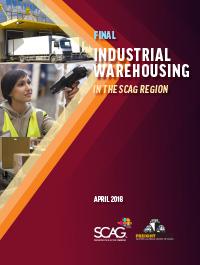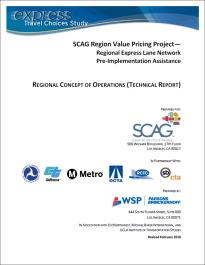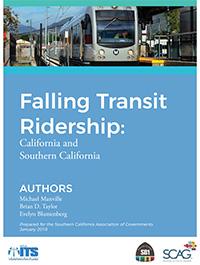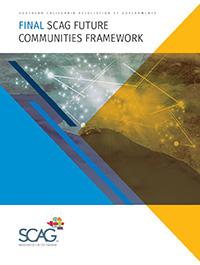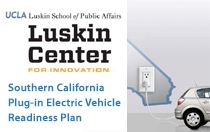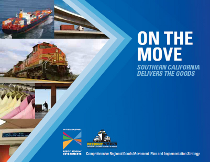SCAG Regional Express Lane Network – Regional Concept of Operations (Technical Report)
The SCAG Regional Express Lane Network Regional Concept of Operations Technical Report is intended to describe how express lane facilities being implemented, planned, or proposed by the region’s county transportation commissions (CTCs) and/or California Department of Transportation (Caltrans) districts in the six-county SCAG region, referred to collectively as the regional express lane network, will operate from a user perspective and to set the framework for the design and operational characteristics of the express lane system. The report provides a blueprint for a regional express lane network that integrates individual express lane facilities into a regional system with consistent or compatible operating, design, and policy rules.
Download the SCAG Regional Express Lane Network - Regional Concept of Operations (Technical Report).
Further updates of this report is available here.
Falling Transit Ridership: California and Southern California
In the last ten years transit use in Southern California has fallen significantly. This report investigates that falling transit use. We define Southern California as the six counties that participate in the Southern California Association of Governments (SCAG) – Los Angeles, Orange, Riverside, San Bernardino, Ventura and Imperial. We examine patterns of transit service and patronage over time and across the region, and consider an array of explanations for falling transit use: declining transit service levels, eroding transit service quality, rising fares, falling fuel prices, the growth of Lyft and Uber, the migration of frequent transit users to outlying neighborhoods with less transit service, and rising vehicle ownership. While all of these factors probably play some role, we conclude that the most significant factor is increased motor vehicle access, particularly among low-income households that have traditionally supplied the region with its most frequent and reliable transit users.
Falling Transit Ridership: California and Southern California
SCAG Future Communities Framework
Big Data and the rapid proliferation of new technologies are poised to transform and disrupt traditional policy making and planning within our local communities and across the Southern California region as a whole. Through improvements in data collection, analysis, and technology applications, governments have the opportunity to be more efficient, innovative, and transparent. To ensure that public agencies and communities in Southern California not only keep up with the pace of innovation, but lead the nation, SCAG hosted an Open Data/Big Data – Smart and Connected SCAG Region Committee (Committee) from June to November of 2017. This report provides a summary of the Committee, its work and outcomes, including a set of policy recommendations, Future Communities Framework, and a short-term work plan, Future Communities Initiative, which will implement the framework.
California’s Film and Television Tax Credit Program
 California’s Film and Television Tax
Credit Program returned an impressive 11 percent return on
investment in its first three years and helped generate $4.3
billion in economic activity and supported 22,300 jobs, according
to a study released today by the Southern California Association
of Governments.
California’s Film and Television Tax
Credit Program returned an impressive 11 percent return on
investment in its first three years and helped generate $4.3
billion in economic activity and supported 22,300 jobs, according
to a study released today by the Southern California Association
of Governments.
Southern California Plug-In Electric Vehicle Readiness Plan
The SCAG Southern California Plug-in Electric Vehicle (PEV) Readiness Plan is an in-depth assessment and planning tool that allows planners to strategically develop the infrastructure necessary to support the region’s growing numbers of electric vehicles. The PEV Readiness Plan is comprised of 15 chapters, covering everything from the basics of PEV charging, to providing technical assistance to commercial property owners and adapting zoning/building codes to streamline the installation of PEV chargers. In addition to the plan, the associated Southern California PEV Atlas provides projections of PEV growth over time in each of the 15 subregions as well as predictions of PEV daytime travel to employment and retail destinations. This information gives planners a wealth of data to support building charging infrastructure where demand will be the greatest.
On the Move: Southern California Delivers the Goods (Executive Summary)
On The Move represents a long-range comprehensive plan for the goods movement system in Southern California. The plan is designed to ensure that the region continues to play a vital role in the global supply chain while meeting regional economic goals, addressing critical mobility challenges, preserving the environment and contributing to community livability and quality of life goals. The plan is the final product of the SCAG’s Comprehensive Regional Goods Movement Plan and Implementation Strategy, a multi-year effort to collect data, conduct analyses and engage with regional, statewide and national stakeholders covering various aspects of the region’s goods movement system.
On the Move: Southern California Delivers the Goods (Executive Summary)
- « first
- ‹ previous
- 1
- 2
- 3
- 4


